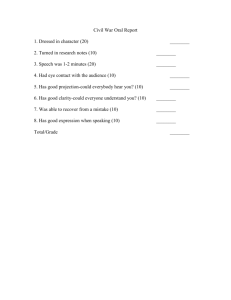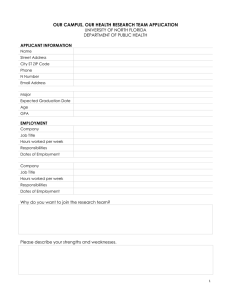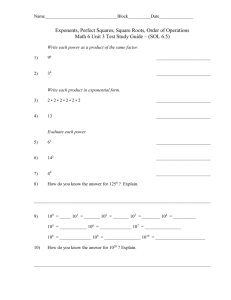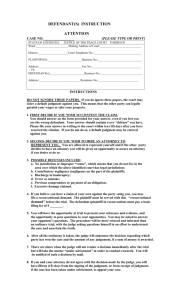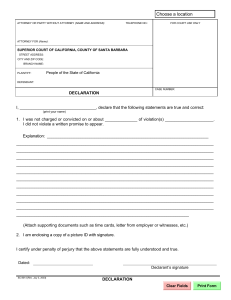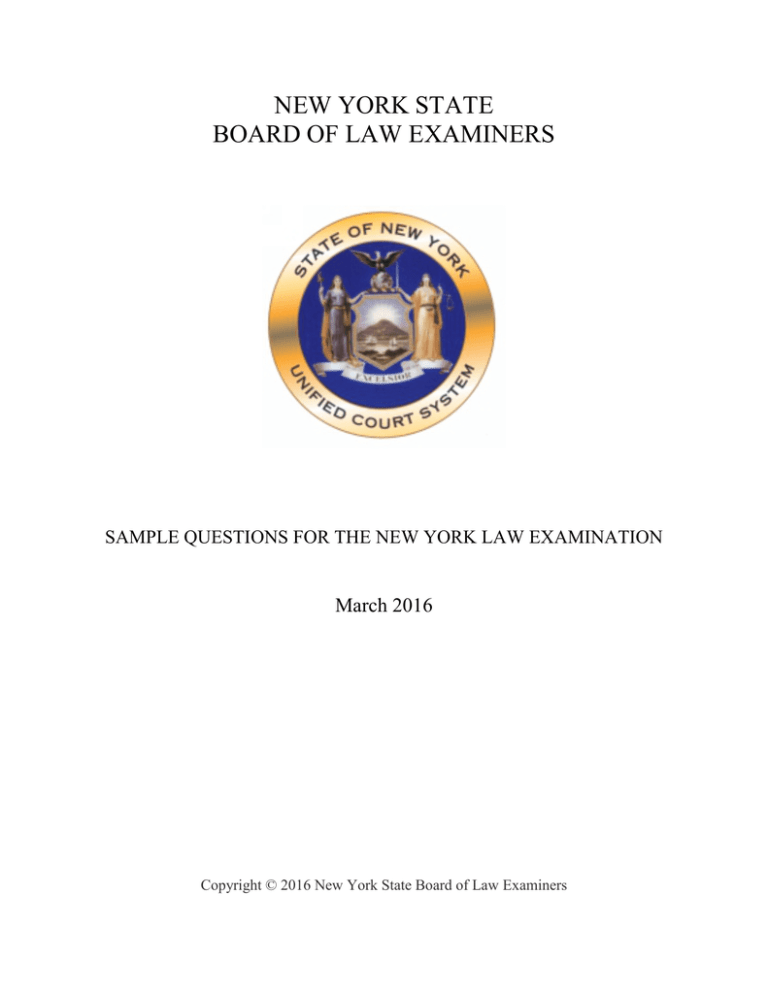
NEW YORK STATE
BOARD OF LAW EXAMINERS
SAMPLE QUESTIONS FOR THE NEW YORK LAW EXAMINATION
March 2016
Copyright © 2016 New York State Board of Law Examiners
The following questions are examples of the types of questions that will be asked on the New
York Law Examination. These sample questions include at least one question in each of the
subjects that are included in that test. The index references on the questions are keyed to the
Course Materials for the New York Law Course and the New York Law Examination and
indicate where the content of the specific question is discussed. Those Course Materials may be
accessed at: http://www.nybarexam.org/Content/NewYorkCourseMaterials.pdf
Sample Questions for the New York Law Examination
Copyright © 2016 New York State Board of Law Examiners
http://www.nybarexam.org
All rights reserved. These materials may be downloaded and printed, in whole or in part,
without alteration, for noncommercial use only but no part may otherwise be reproduced in any
form or by any means, electronic or mechanical, including photocopying, recording or by any
informational storage system without express written permission from the New York State Board
of Law Examiners. These materials may not be distributed, downloaded, modified, reused,
reproduced, reposted, retransmitted, disseminated, sold, published, broadcast or circulated or
otherwise used or shared in any manner for commercial use without express written permission
from the New York State Board of Law Examiners. Any modification of the content, or any
portion thereof, or use of the content for any unpermitted and/or commercial use constitutes an
infringement of the New York State Board of Law Examiners’ copyrights and other proprietary
rights. Noncommercial use means use of these materials in a manner that is not intended for
commercial advantage or private monetary compensation. Commercial use means use of these
materials in any manner that is intended for commercial advantage or monetary compensation.
This includes private tutoring or commercial bar test-prep courses or settings.
ADMINISTRATIVE LAW
I. RULEMAKING
B. STATUTORY PROCEDURES
In order for a state agency to adopt an administrative rule pursuant to the State Administrative
Procedure Act (SAPA), the agency must:
(a)
Submit notice of the proposed rule to the secretary of state for publication and
afford the public an opportunity to submit comments on the proposed rule.
(b)
Submit notice of the proposed rule to the secretary of state for publication, but
affording an opportunity for public comment is not required.
(c)
Post notice of the proposed rule on the agency’s website, and afford the public an
opportunity to submit comments on the proposed rule.
(d)
Post notice of the proposed rule on the agency’s website, but affording an
opportunity for public comment is not required.
Answer: (a)
BUSINESS RELATIONSHIPS
BUSINESS CORPORATIONS
II. MANAGEMENT AND CONTROL
B. DIRECTORS
In the absence of a controlling provision in its certificate of incorporation or by-laws, a director
of a business corporation may be removed:
(a)
Only by vote of the shareholders and only for cause.
(b)
Only by vote of the shareholders for cause or without cause.
(c)
Either by vote of the shareholders or by vote of the directors but only for cause.
(d)
Either by vote of the shareholders or by vote of the directors for cause or without
cause.
Answer: (a)
BUSINESS RELATIONSHIPS
LIMITED LIABILITY COMPANIES
III. PROFESSIONAL SERVICE LIMITED LIABILITY COMPANIES
B. PROFESSIONAL RELATIONSHIPS AND LIABILITIES
A lawyer who is a member of a law firm organized as a professional service limited liability
company is personally liable for professional malpractice committed by:
(a)
The lawyer herself only.
(b)
The lawyer herself and any person in the firm under her direct supervision and
control.
(c)
The lawyer herself and any other lawyer who is a member of the firm.
(d)
All lawyers who are members or employees of the firm.
Answer: (b)
CIVIL PRACTICE AND PROCEDURE
III. PERSONAL JURISDICTION
B. LONG-ARM JURISDICTION
Which one of the following acts is not a valid basis for the exercise of personal jurisdiction over
a non-domiciliary as to a cause of action arising from that act?
(a)
Transaction of business within the state.
(b)
Contracting out of state to supply goods or services in the state.
(c)
Defamation committed within the state.
(d)
Ownership of real property situated within the state.
Answer: (c)
CIVIL PRACTICE AND PROCEDURE
IV. VENUE AND FORUM NON CONVENIENS
A. PROPER VENUE FOR VARIOUS TYPES OF ACTIONS
The proper venue for an action by a non-resident of New York against a New York resident for
specific performance of a contract entered into in New York to sell real property located in New
York is in:
(a)
The county in which the defendant resides.
(b)
Any county designated by the plaintiff.
(c)
The county in which the real property is located.
(d)
The county in which the contract was made.
Answer: (c)
CIVIL PRACTICE AND PROCEDURE
V. LIMITATIONS OF TIME
A. STATUTES OF LIMITATIONS
In order to be timely, an action commenced in New York by a nonresident plaintiff against a
resident of New York to recover damages for a claim that accrued in State X must be:
(a)
Timely under both the law of New York and the law of State X.
(b)
Timely under the law of New York, only.
(c)
Timely under the law of State X, only.
(d)
A nonresident may not commence an action in New York against a resident of
New York for a claim that accrued outside of New York.
Answer: (a)
CIVIL PRACTICE AND PROCEDURE
IX. MOTIONS
A. MOTION TO DISMISS
If a pre-answer motion is made on any ground, which of the following defenses is waived if not
included in the motion:
(a)
Lack of subject matter jurisdiction.
(b)
Failure to state a cause of action.
(c)
Failure to join a necessary party.
(d)
Lack of personal jurisdiction over the defendant.
Answer: (d)
CONFLICT OF LAWS
I. APPLICATION IN SPECIFIC AREAS
B. CONTRACTS
In an action in New York for breach of an employment contract, a New York court will always
apply the law of:
(a)
The place of contracting.
(b)
The place of performance.
(c)
The domicile of the parties.
(d)
The jurisdiction with the most significant relationship to the transaction and the
parties.
Answer: (d)
CONTRACTS
I. MUTUAL MISTAKE vs. UNILATERAL MISTAKE
Is a contract entered into under a mutual mistake of fact by the parties voidable and subject to
rescission or reformation?
(a)
Yes, as long as the mistake existed at the time the contract was entered into, even
though the mistake is insubstantial.
(b)
Yes, if the mistake is substantial, even if it resulted from circumstances not in
existence at the time the contract was entered into.
(c)
No, unless the mistake is both substantial and existed at the time the contract was
entered into.
(d)
No, mutual mistake, alone, is an insufficient basis for reformation or rescission of
a contract under any circumstances.
Answer: (c)
CRIMINAL LAW AND PROCEDURE
I. GENERAL PRINCIPLES
C. AFFIRMATIVE AND ORDINARY DEFENSES
Who has the burden of proof regarding an alibi at a criminal trial?
(a)
The defendant, beyond a reasonable doubt.
(b)
The defendant, by a preponderance of the evidence.
(c)
The defendant, by clear and convincing evidence.
(d)
The prosecution, beyond a reasonable doubt.
Answer: (d)
CRIMINAL LAW AND PROCEDURE
III. NEW YORK CONSTITUTIONAL AND PROCEDURAL PROTECTIONS
A. DETENTION AND WARRANTLESS ARREST
In order for a police officer in New York to forcibly stop and detain a person, the officer must
have:
(a)
An objective, credible reason, not necessarily indicative of criminality.
(b)
A founded suspicion that criminal activity is afoot.
(c)
A reasonable suspicion that the person was involved in a felony
or a misdemeanor.
(d)
Answer: (c)
Probable cause that the person committed a felony or misdemeanor.
EVIDENCE
II. RELEVANCY
C. HABIT
Is a witness’s testimony regarding his habit admissible in a negligence action to prove that his
conduct conformed to his habit on a specific occasion?
(a)
No, because a witness in a negligence action must have an independent
recollection of the specific occasion at issue in order to testify regarding his
conduct on that occasion.
(b)
No, because the prejudicial impact of evidence of habit outweighs its probative
value.
(c)
Yes, if the habit is consistent with a generally accepted standard of care.
(d)
Yes, if the proof of the witness’s habit demonstrates a deliberate and repetitive
practice by a person in complete control of the circumstances in which it is
employed.
Answer: (d)
MATRIMONIAL AND FAMILY LAW
I. GETTING MARRIED
B. PRENUPTIAL AND POST-NUPTIAL CONTRACTS
In order for a prenuptial agreement to be valid and enforceable in New York, the agreement must
be in writing, and:
(a)
Subscribed by both parties and acknowledged in the same manner as a deed.
(b)
Subscribed by both parties before two witnesses.
(c)
Subscribed only by the party against whom the agreement is sought to be
enforced, but no acknowledgement or witnesses are required.
(d)
Answer: (a)
Subscribed by both parties, but no acknowledgement or witnesses are required.
MATRIMONIAL AND FAMILY LAW
IV. SUPPORT
B. CHILD SUPPORT STANDARDS ACT
Assuming no earlier emancipation, parents in New York are liable for support of a child only
until:
(a)
Age 18.
(b)
Age 19.
(c)
Age 21.
(d)
An appropriate age, not less than 18, depending on the child’s financial
circumstances.
Answer: (c)
PROFESSIONAL RESPONSIBILITY
IX. REGULATION AND RESPONSIBILITIES OF THE LEGAL PROFESSION
A. REGISTRATION OF ATTORNEYS
B. CONTINUING LEGAL EDUCATION
Attorneys admitted to practice in New York are required to file a registration statement and pay a
registration fee:
(a)
Every two years, and continuing legal education is encouraged but not required.
(b)
Every two years, and the attorney must certify that a required amount of
continuing legal education has been completed.
(c)
Every three years, and continuing legal education is encouraged but not required.
(d)
Every three years, and the attorney must certify that a required amount of
continuing legal education has been completed.
Answer: (b)
REAL PROPERTY
III. REAL PROPERTY MORTGAGES
C. ENFORCEMENT
Does a defendant in an action to foreclose a mortgage on real property have the right to redeem
the property by paying into court the full amount due on the mortgage debt plus the costs of the
action?
(a)
Yes, until the mortgagor is served with notice of entry of judgment of foreclosure
and sale.
(b)
Yes, until the foreclosure sale takes place.
(c)
Yes, until 10 days after the foreclosure sale takes place.
(d)
No, because once a foreclosure action is commenced, there is no right of
redemption.
Answer: (b)
TORTS AND TORT DAMAGES
II. CONTRIBUTION, INDEMNIFICATION AND LIMITATIONS ON JOINT AND
SEVERAL LIABILITY
D. EFFECT OF RELEASE
A release given to one of two or more tortfeasors liable for the same injury reduces the amount
the injured party can recover from the non-settling tortfeasor by:
(a)
The amount paid by the settling tortfeasor, only.
(b)
The amount of the settling tortfeasor’s apportioned share of the liability, only.
(c)
The greater of the amount paid by the settling tortfeasor or the amount of the
settling tortfeasor’s apportioned share of the liability.
(d)
The lesser of the amount paid by the settling tortfeasor or the amount of the
settling tortfeasor’s apportioned share of the liability.
Answer: (c)
TORTS AND TORT DAMAGES
V. MUNICIPAL TORT LIABILITY
C. NOTICE OF CLAIM REQUIREMENT
In order to maintain an action against a municipality to recover damages sustained as a result of
the municipality’s negligence, absent a court order allowing service of a late notice of claim,
within how many days after the claim arises must a notice of claim be served as a condition
precedent to the commencement of the action?
(a)
30.
(b)
60.
(c)
90.
(d)
120.
Answer: (c)
TRUSTS, WILLS AND ESTATES
I. INTESTATE SUCCESSION
Where a person dies intestate survived only by his spouse and two adult children, the net estate
will be distributed:
(a)
100% to the spouse.
(b)
50% to the spouse and 25% to each child.
(c)
$50,000 and one-half of the residue to the spouse and the remainder split
equally between the children.
(d)
Answer: (c)
One-third of the net estate to each of the spouse and the children.
TRUST, WILLS AND ESTATES
IV. HEALTH CARE PROXIES AND POWER OF ATTORNEY
B. POWER OF ATTORNEY
Pursuant to a duly executed short form power of attorney and in the absence of a statutory gifts
rider, an agent may make gifts of the principal’s assets in excess of an annual total of $500 to:
(a)
Any person, as long as the gifts do not exceed the annual federal gift tax exclusion
amount for each donee.
(b)
Any person, in accordance with a pattern of gifting established by the principal
before his incapacity.
(c)
The principal’s spouse and children, only, in any amounts.
(d)
Pursuant to a duly executed short form power of attorney and in the absence of a
statutory gifts rider, an agent may not make gifts of the principal’s assets in
excess of an annual total of $500.
Answer: (d)

